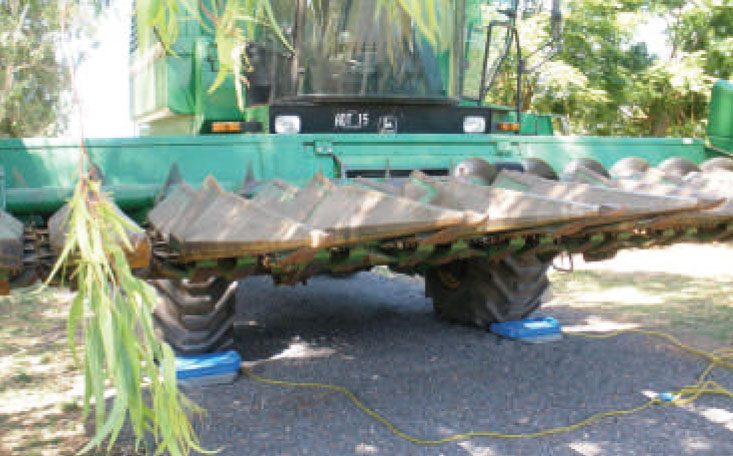Traffic of harvester combines: effect on maize yields (Zea Mays L.) and soil compaction under direct sowing system
Keywords:
soil bearing capacity, cone index, crop yield, root growthAbstract
In this work, we quantified the effects of harvest traffic having different tyre ground pressures and axle loads on soil properties and maize (Zea Mays L.) yields. The treatments consisted of a control plot with no traffic (T1), a combine harvester with low tyre ground pressure (T2) and the same harvest traffic with high tyre ground pressure (T3). Cone index (CI), soil water content (SWC), rut depth (RD), root dry matter per plant (RDM) and maize yields (MY) were measured at seven places in relation to the tracks, namely: centre of the tracks (0), and at 70, 140 and 210 cm on either side of them. For three growing seasons, the results showed that in the topsoil (0 to 20 cm), CI values produced by treatment T3 were > 2.7 MPa and between 3.4 to 4.25 MPa in the subsoil (20 to 60 cm). Also, when the soil was trafficked by tyres with infaltion pressures of 120 to 240 kPa, the CI increased in the topsoil and subsoil, but differences in rut depth (RD) at the surface did not extend into the subsoil in terms of CI. The greatest differences in RDM were found in the third growing season. The minimum MY of 4.7 Mg ha-1 was observed in 2016 (third growing season) in the centre line of the tyre tracks after one pass of combine harvester with high tyre ground pressure. Yield increased with distance from the track centres reaching 5.10 Mg ha-1 at 210 cm on either side of them. The main conclusions were that one pass of the combine harvesters with total weight load between 16.67 and 21.10 Mg was sufficient to increase the CI in both the topsoil and subsoil layers while maize yields were significantly reduced by all compaction in the combine harvesters tracks, as well as all positions alongside them.

Downloads
Published
Issue
Section
License
Aquellos autores/as que tengan publicaciones con esta revista, aceptan las Políticas Editoriales.


